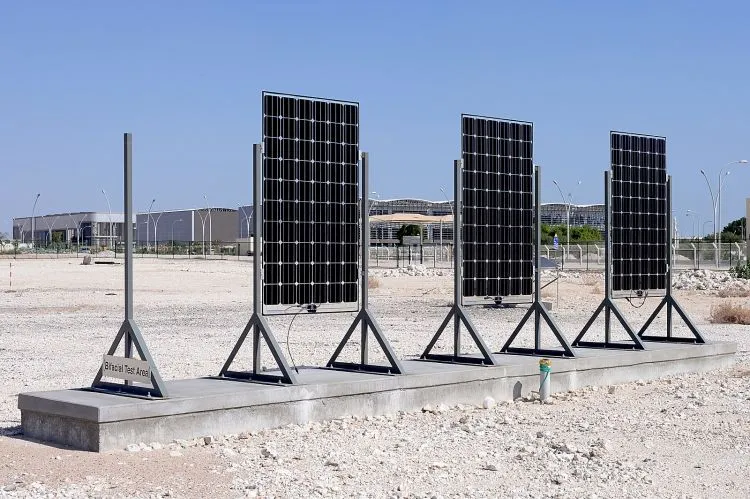Qatar solar testing facility ‘open for business’
Sep 9, 2019 07:47 PM ET

SPONSORED
After more than six years of scientific and technical research efforts in the solar sector, the Qatar Environment and Energy Research Institute (QEERI) is now targeting a major role in the industry itself.
With an established outdoor testing site, a burgeoning cross-sector consortium and soon, a top of the line indoor lab, the state-backed organisation is well-positioned to achieve just that.
The large outdoor test site (35,000m2) has been running continuously since 2013 with 26 manufacturers’ modules in place.
Dr. Veronica Bermudez Benito, senior research director at QEERI, says the facility has a unique offering that segues with the solar industry’s own growth.
“So far the PV industry has seen most of its deployment in relatively temperate climates, like western Europe and the US, but now we can expect to see more and more installations in places with harsher environments. We want to explore the impact of these harsher climates and determine if the standards need to be revisited,” she explains.
She stresses that when it comes to harsh, Qatar is hard to beat.
“Harsh is a broad definition. It can mean high UV, high temperature, high salinity, high winds, but the dataset worldwide is not so large that we have sufficient experience of these conditions combined. Here we have high UV, high temperature, high humidity, high salinity and high soiling. That is a combination of conditions that is currently lacking in the knowledge of current PV manufacturing,” she says.
The test site, which cost US$10 million and uses a US$2 million data acquisition system, has been meticulously maintained during its lifetime. While some regional test sites have come and gone as operators’ interest has flagged, the QEERI site has been generating data every minute since March 2013. Dr. Bermudez says the test equipment is routinely checked to ensure the quality of that data.
In addition to PV modules the site has also accommodated pilot systems such as a 100kW microgrid with several and diverse loads, solar desalination plants and is currently working with industry partners to install bifacial modules fitted to trackers.
After a year-long establishment phase, the QEERI Solar Consortium is now very much “open for business”. The group includes Qatari utility Kahramaa, the country’s ministry of energy and industry along with Q CELLS, DSM, Total and NICE PV Research (previously Manz’s CIGS thin film research group). Now, it is looking to expand the group with fellow research groups, manufacturers, tool makers and materials firms invited to participate.
Dr. Bermudez says the work of the consortium can be split in two halves.
“It’s about doing outdoor testing for equipment manufacturers and researchers in a hot, harsh desert environment and providing them with that proprietary data.
“The second half of the consortium is about the group research projects. This is where all the members of the consortium devise and collaborate on group research projects and share the results. The first is being kicked off now. It’s about PV abrasion; what happens to PV coatings when you start running some of these commercial cleaning machines over them?”
Energy-Water-Environment
The focus on harsh environments is a natural one for QEERI as is focus of a new conference it is launching in December.
The International Conference on Sustainable Energy-Water-Environment Nexus in Desert Climate 2019 will focus on the challenges is expected to bring together 400 academics from a broad spectrum of backgrounds to explore challenges in these three interconnected areas. The deadline to submit a paper for the conference is open until 25 September (https://www.hbku.edu.qa/en/qeeri-ICSEWEN19)
“The importance of this nexus is only going to grow over time,” says Dr. Bermudez, Chair of the Conference.
“This is the first year so the main objective is to begin positioning Qatar and QEERI in the international landscape for work on this nexus. The second objective is to bring together researchers and scientists with the new generations. We believe that this kind of technical and industrial conference is defining the future for today's younger generation. They need be part of this conversation. So we will be running a schools competition for different age groups to present their solutions to the nexus. We will go beyond that and host an open dialogue between the researchers and the school student about what they think their future should look like,” explains Bermudez.
Also read


